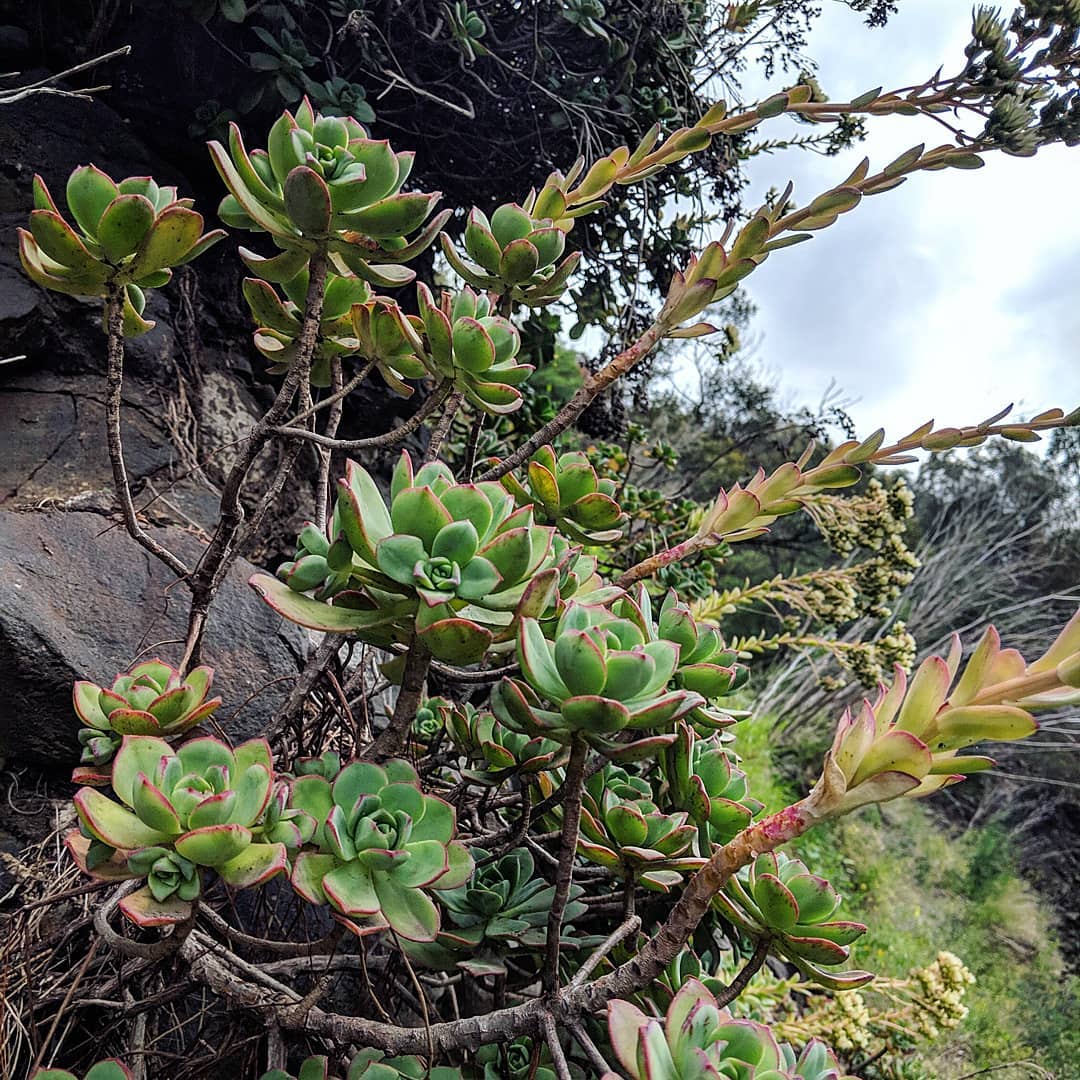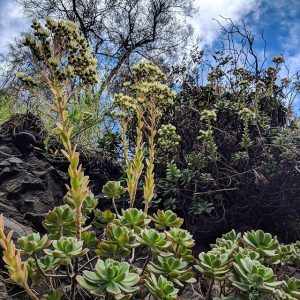Pinwheel Aeonium (Aeonium haworthii), forming a remarkable patch of aerial succulent garden over the Merri Creek.
Aeonium is a Canary Islands native, and formerly enjoyed popularity (alongside the related Aeonium arboreum, a favoured metropolitan topiary plant) as bulletproof inclusions in Melbourne’s cottage gardens. Like a number of other succulents with poor reproductive chances here but favourable clonal capability, adventive patches of Aeonium in Victoria are generally the result of one of two histories of neglect: either they are the spreading offspring of an old, improperly tended garden planting turned into downhill succulent thicket, or they are the spawn of garden waste chucked off the side of a road, footpath or car park by someone apparently too busy or guilt ridden to commit to proper disposal.
Easy to propagate from cuttings and easily spread, Aeonium is exactly the kind of old fashioned plant that is dumped on urban margins (alongside Aloes and Geraniums) when it gets too woody. In that sense, it is somewhat surprising that Pinwheel Aeonium apparently took so long to strike successfully as a weed in Victoria, with the first botanical records of naturalised plants only made in the 1980s. However, the plant likely has fairly specific soil preferences and its low stature precludes successful establishment in areas where other plants may overshadow it. As a consequence, its Victorian range has been effectively restricted to particular coastal dunes and outcrops (around Geelong and Black Rock) and to weirdly specialised inland sites like this friable rock exposure on the Merri Creek.
For every abandoned plant of this species that thrives in the metropolitan’s secret gardens, there are probably a hundred that died desiccated or starved beneath a canopy of grass. Typical of weedy Melbourne though, when one of these plants does strike the results are spectacular.
View Original Post on Instagram
Search for information about Aeonium haworthii in the Flora of Victoria
View information and occurrences of Aeonium haworthii on the Atlas of Living Australia










